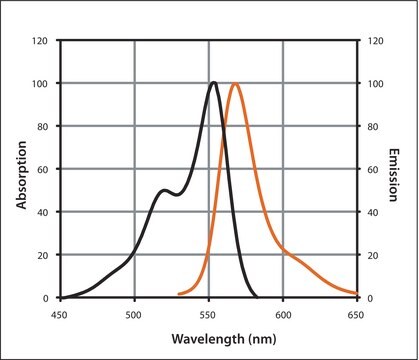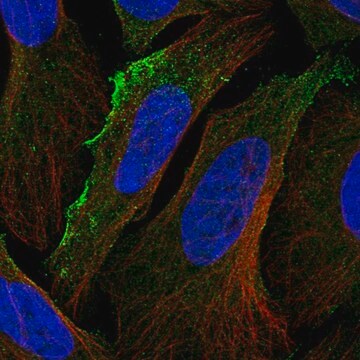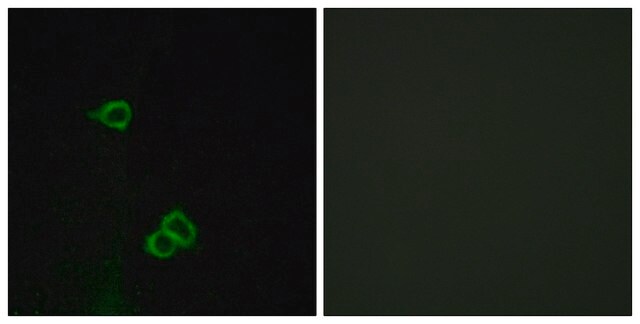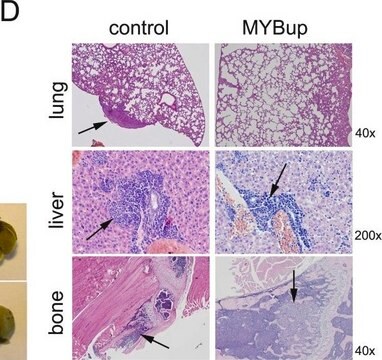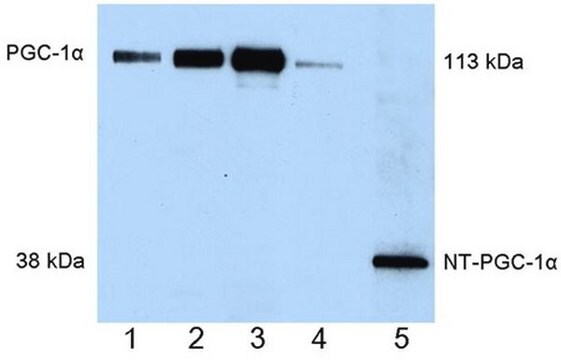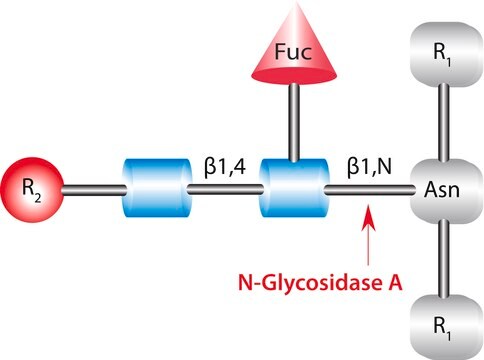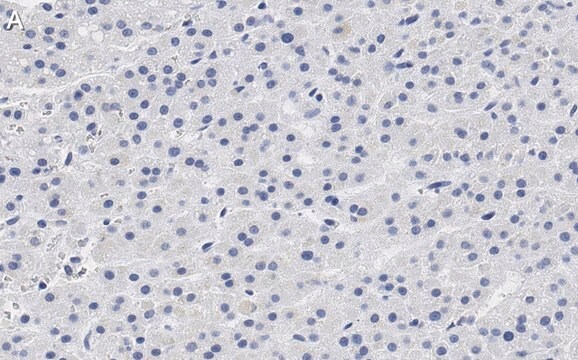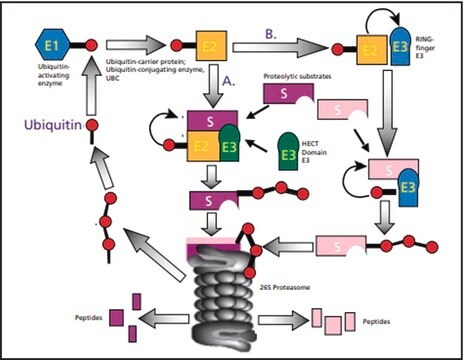推荐产品
生物源
rabbit
品質等級
共軛
unconjugated
抗體表格
affinity isolated antibody
抗體產品種類
primary antibodies
無性繁殖
polyclonal
產品線
Prestige Antibodies® Powered by Atlas Antibodies
形狀
buffered aqueous glycerol solution
物種活性
human
技術
immunohistochemistry: 1:20- 1:50
免疫原序列
LHLFDYSEPGNFSDISWPCNSSDCIVVDTVMCPNMPNKSVLLY
運輸包裝
wet ice
儲存溫度
−20°C
目標翻譯後修改
unmodified
基因資訊
human ... CXCR7(57007)
免疫原
chemokine (C-X-C motif) receptor 7 recombinant protein epitope signature tag (PrEST)
應用
Applications in which this antibody has been used successfully, and the associated peer-reviewed papers, are given below.
Immunohistochemistry (1 paper)
Immunohistochemistry (1 paper)
特點和優勢
Prestige Antibodies® are highly characterized and extensively validated antibodies with the added benefit of all available characterization data for each target being accessible via the Human Protein Atlas portal linked just below the product name at the top of this page. The uniqueness and low cross-reactivity of the Prestige Antibodies® to other proteins are due to a thorough selection of antigen regions, affinity purification, and stringent selection. Prestige antigen controls are available for every corresponding Prestige Antibody and can be found in the linkage section.
Every Prestige Antibody is tested in the following ways:
Every Prestige Antibody is tested in the following ways:
- IHC tissue array of 44 normal human tissues and 20 of the most common cancer type tissues.
- Protein array of 364 human recombinant protein fragments.
聯結
Corresponding Antigen APREST77929
外觀
Solution in phosphate buffered saline, pH 7.2, containing 40% glycerol and 0.02% sodium azide.
法律資訊
Prestige Antibodies is a registered trademark of Merck KGaA, Darmstadt, Germany
免責聲明
Unless otherwise stated in our catalog or other company documentation accompanying the product(s), our products are intended for research use only and are not to be used for any other purpose, which includes but is not limited to, unauthorized commercial uses, in vitro diagnostic uses, ex vivo or in vivo therapeutic uses or any type of consumption or application to humans or animals.
未找到合适的产品?
试试我们的产品选型工具.
儲存類別代碼
10 - Combustible liquids
水污染物質分類(WGK)
WGK 1
閃點(°F)
Not applicable
閃點(°C)
Not applicable
You-Hong Cheng et al.
PloS one, 12(11), e0187949-e0187949 (2017-11-11)
Recent evidence suggests that chemokine CXCL12, the cognate agonist of chemokine receptors CXCR4 and ACKR3, reduces thrombin-mediated impairment of endothelial barrier function. A detailed characterization of the effects of CXCL12 on thrombin-mediated human lung endothelial hyperpermeability is lacking and structure-function
Bing-Chao Dong et al.
Neural regeneration research, 15(6), 1079-1085 (2019-12-12)
Stromal cell-derived factor-1 and its receptor CXCR4 are essential regulators of the neurogenesis that occurs in the adult hippocampal dentate gyrus. However, the effects of CXCR7, a new atypical receptor of stromal cell-derived factor-1, on hippocampal neurogenesis after a stroke
Xianlong Gao et al.
PloS one, 13(9), e0204041-e0204041 (2018-09-25)
We observed in PRESTO-Tango β-arrestin recruitment assays that the α1-adrenergic receptor (AR) antagonist prazosin activates chemokine (C-X-C motif) receptor (CXCR)4. This prompted us to further examine this unexpected pharmacological behavior. We screened a panel of 14 α1/2- and β1/2/3-AR antagonists
Lina Deng et al.
Cancer biomarkers : section A of Disease markers, 20(1), 1-6 (2017-08-02)
Glioblastoma (GBM) is the most common and most fatal primary brain cancer in adults. Due to the complex nature of GBM, its pathogenesis still remain unclear. Accumulating evidence suggest that chemokine receptor CXCR7 contribute to the development of various types
Yu Zhang et al.
Aging and disease, 9(2), 287-295 (2018-06-14)
Stromal-derived factor-1 (SDF-1, also known as CXCL12) and its receptors CXCR4 and CXCR7 play important roles in brain repair after ischemic stroke, as SDF-1/ CXCR4/CXCR7 chemokine signaling is critical for recruiting stem cells to sites of ischemic injury. Upregulation of
我们的科学家团队拥有各种研究领域经验,包括生命科学、材料科学、化学合成、色谱、分析及许多其他领域.
联系技术服务部门